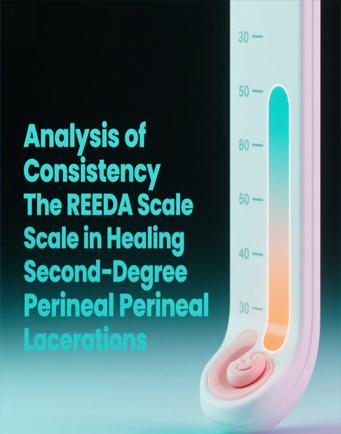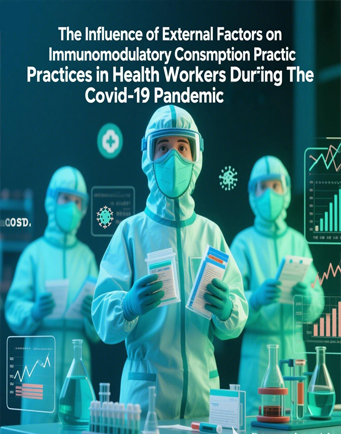Determinants of Contraceptive Use at The First Sexual Intercourse among Unmarried Adolescents in Indonesia: 2017 IDHS Analysis
Downloads
Adolescents confront boundaries in obtaining contraception counting prohibitive policies and adolescents possess failure to obtain contraceptives since of information, transportation, and monetary limitations. The objective of this study is to assign the variables which impact on the use of contraception for the first sexual intercourse among unmarried adolescents. Quantitative research employing cross sectional analysis was implemented in this study, by processing 2017 Indonesian Health Demographic Survey (IDHS) data. Cox regression was utilized to examine the association between sociodemographic, peer and social influences, contraceptive knowledge and contraceptive use. The study populace encompassed 705 single young people; 15 to 24 years old. The study resulted that contraceptive use at the primary sexual intercourse by single young people in Indonesia was approximately 50.35%. After bivariate analysis was applied, it was revealed that there is a significant relationship between education with the contraceptive use at the first sexual intercourse among unmarried adolescents in Indonesia (p-value = 0.049). In the final model, we discovered that the level of education and contraceptive use was statistically significant, and the contraceptive use was higher in adolescents with high education than adolescents with middle and primary education (PR 1.51, 95% CI 1.09 – 2.07, p = 0.012). Therefore, this finding provides information that education is a prominent variable for understanding contraceptive use in adolescents.
Adedini, S. A., Mobolaji, J. W., Alabi, M., & Fatusi, A. O. (2021). Changes in contraceptive and sexual behaviours among unmarried young people in Nigeria: Evidence from nationally representative surveys. PLoS ONE, 16(2): e0246309. https://doi.org/10.1371/journal.pone.0246309
Adilah, Y., Mutahar, R., & Sari, I. P. (2017). Determinan Penggunaan Kondom Pada Hubungan Seksual Pertama Kali Oleh Remaja Belum Menikah Di Indonesia (Analisis Data SDKI KRR 2012). Jurnal Ilmu Kesehatan Masyarakat, 8(2), 91–99. https://doi.org/10.26553/jikm.2016.8.2.91-99
Agha, S., Morgan, B., Archer, H., Paul, S., Babigumira, J. B., & Guthrie, B. L. (2021). Understanding how social norms affect modern contraceptive use. BMC Public Health, 21(1), 1–11. https://doi.org/10.1186/s12889-021-11110-2
Ahinkorah, B. O. (2020). Predictors of unmet need for contraception among adolescent girls and young women in selected high fertility countries in sub-Saharan Africa: a multilevel mixed effects analysis. PloS one, 15(8), e0236352. https://doi.org/10.1371/journal.pone.0236352
Badan Kependudukan dan Keluarga Berencana Nasional. (2017). Survei Demografi Dan Kesehatan: Kesehatan Reproduksi Remaja 2017. Badan Kependudukan Dan Keluarga Berencana Nasional.
Budiharsana, M. (2017). Contraceptive Services Available to Unmarried Sexually Active Adolescents. Makara Journal of Health Research, 21(2), 68–74. https://doi.org/10.7454/msk.v21i2.7231
Chernick, L. S., Schnall, R., Higgins, T., Stockwell, M. S., Castaño, P. M., Santelli, J., & Dayan, P. S. (2015). Barriers to and enablers of contraceptive use among adolescent females and their interest in an emergency department based intervention. Contraception, 91(3), 217-225. https://doi.org/10.1016/j.contraception.2014.12.003
Decat, P., De Meyer, S., Jaruseviciene, L., Orozco, M., Ibarra, M., Segura, Z., Medina, J., Vega, B., Michielsen, K., Temmerman, M., & Degomme, O. (2015). Sexual onset and contraceptive use among adolescents from poor neighbourhoods in Managua, Nicaragua. European Journal of Contraception and Reproductive Health Care, 20(2), 88–100. https://doi.org/10.3109/13625187.2014.955846
Durojaye, E. (2011). Access to contraception for adolescents in Africa: a human rights challenge. The Comparative and International Law Journal of Southern Africa, 44(1), 1–29. Retrieved from https://journals.co.za/doi/10.10520/EJC24722
Habito, C. M., Vaughan, C., & Morgan, A. (2019). Adolescent sexual initiation and pregnancy: what more can be learned through further analysis of the demographic and health surveys in the Philippines?. BMC public health, 19, 1142. https://doi.org/10.1186/s12889-019-7451-4
Kementerian Kesehatan Republik Indonesia. (2018). Survei Demografi dan Kesehatan Indonesia Tahun 2017. Jakarta: Kementerian Kesehatan Republik Indonesia.
Lee, J. (2017). Factors Affecting Contraceptive Use among Adolescent Girls in South Korea. Child Health Nursing Research, 23(3), 259–267. https://doi.org/10.4094/chnr.2017.23.3.259
Lindberg, L. D., Firestein, L., & Beavin, C. (2021). Trends in U.S. adolescent sexual behavior and contraceptive use, 2006-2019. Contraception: X, 3, 100064. https://doi.org/10.1016/j.conx.2021.100064
Lopez, L. M., Grey, T. W., Tolley, E. E., & Chen, M. (2016). Brief educational strategies for improving contraception use in young people. In Cochrane Database of Systematic Reviews, 3. https://doi.org/10.1002/14651858.CD012025.pub2
Mandiwa, C., Namondwe, B., Makwinja, A., & Zamawe, C. (2018). Factors associated with contraceptive use among young women in Malawi: analysis of the 2015–16 Malawi demographic and health survey data. Contraception and Reproductive Medicine, 3(1), 1–8. https://doi.org/10.1186/s40834-018-0065-x
Mulubwa, C., Munakampe, M. N., Namakula, H., Hernandez, A., Ssekamatte, T.,… & Tetui, M. (2021). Framing Contraceptive Use Motivations Among Adolescents and Young Adults Living in Informal Settlements in Kira Municipality, Wakiso District, Uganda. Frontiers in Global Women’s Health, 2:658515. https://doi.org/10.3389/fgwh.2021.658515
Munakampe, M. N., Zulu, J. M., & Michelo, C. (2018). Contraception and abortion knowledge, attitudes and practices among adolescents from low and middle-income countries: a systematic review. BMC health services research, 18(1), 1-13. https://doi.org/10.1186/s12913-018-3722-5
Nyarko, S. H. (2015). Prevalence and correlates of contraceptive use among female adolescents in Ghana. BMC women's health, 15(60), 1-6. https://doi.org/10.1186/s12905-015-0221-2
Oppong, F. B., Logo, D. D., Agbedra, S. Y., Adomah, A. A., Amenyaglo, S., Arhin-Wiredu, K., ... & Ae-Ngibise, K. A. (2021). Determinants of contraceptive use among sexually active unmarried adolescent girls and young women aged 15–24 years in Ghana: a nationally representative cross-sectional study. BMJ open, 11(2), e043890. https://doi.org/10.1136/bmjopen-2020-043890
Prendergast, L. E., Leung, R., Toumbourou, J. W., Taft, A., McMorris, B. J., & Catalano, R. F. (2017). Sexual behaviour in early adolescence: a cross-national comparison of Australian and United States youth. Australian journal of psychology, 69(1), 3–11. https://doi.org/10.1111/ajpy.12118
Upadhyay, U. D., Raifman, S., & Raine-Bennett, T. (2016). Effects of relationship context on contraceptive use among young women. Contraception, 94(1), 68–73. https://doi.org/10.1016/j.contraception.2016.02.025
World Health Organization. (2004). Contraception Issues in Adolescent Health and Development. Geneva: World Health Organization.
World Health Organization. (2020). Adolescent Pregnancy. Geneva: World Health Organization.
World Health Organization. (2021). Adolescent and young adult health. Geneva: World Health Organization.
Young, H., Burke, L., & Nic Gabhainn, S. (2018). Sexual intercourse, age of initiation and contraception among adolescents in Ireland: Findings from the Health Behaviour in School-aged Children (HBSC) Ireland study. BMC Public Health, 18(1), 1–17. https://doi.org/10.1186/s12889-018-5217-z
Copyright (c) 2022 JURNAL INFO KESEHATAN

This work is licensed under a Creative Commons Attribution-NonCommercial-ShareAlike 4.0 International License.
Copyright notice
Ownership of copyright
The copyright in this website and the material on this website (including without limitation the text, computer code, artwork, photographs, images, music, audio material, video material and audio-visual material on this website) is owned by JURNAL INFO KESEHATAN and its licensors.
Copyright license
JURNAL INFO KESEHATAN grants to you a worldwide non-exclusive royalty-free revocable license to:
- view this website and the material on this website on a computer or mobile device via a web browser;
- copy and store this website and the material on this website in your web browser cache memory; and
- print pages from this website for your use.
- All articles published by JURNAL INFO KESEHATAN are licensed under the Creative Commons Attribution 4.0 International License. This permits anyone to copy, redistribute, remix, transmit and adapt the work provided the original work and source is appropriately cited.
JURNAL INFO KESEHATAN does not grant you any other rights in relation to this website or the material on this website. In other words, all other rights are reserved.
For the avoidance of doubt, you must not adapt, edit, change, transform, publish, republish, distribute, redistribute, broadcast, rebroadcast or show or play in public this website or the material on this website (in any form or media) without appropriately and conspicuously citing the original work and source or JURNAL INFO KESEHATAN prior written permission.
Permissions
You may request permission to use the copyright materials on this website by writing to jurnalinfokesehatan@gmail.com.
Enforcement of copyright
JURNAL INFO KESEHATAN takes the protection of its copyright very seriously.
If JURNAL INFO KESEHATAN discovers that you have used its copyright materials in contravention of the license above, JURNAL INFO KESEHATAN may bring legal proceedings against you seeking monetary damages and an injunction to stop you using those materials. You could also be ordered to pay legal costs.
If you become aware of any use of JURNAL INFO KESEHATAN copyright materials that contravenes or may contravene the license above, please report this by email to jurnalinfokesehatan@gmail.com
Infringing material
If you become aware of any material on the website that you believe infringes your or any other person's copyright, please report this by email to jurnalinfokesehatan@gmail.com.





































